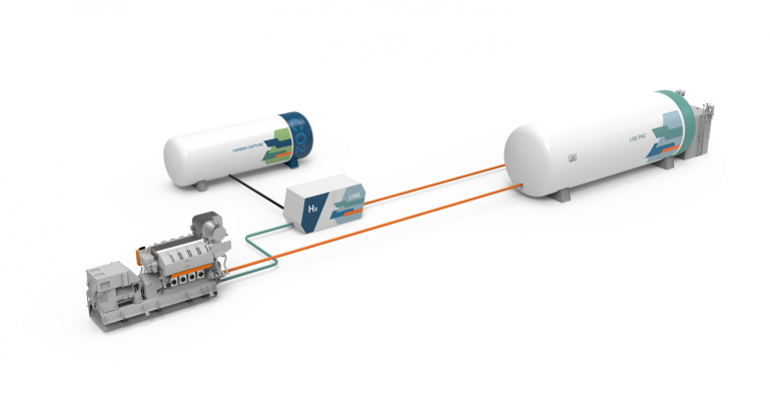France may need to postpone reactor closures, says IEA
01 December 2021
The French government will need to take important decisions to ensure the country gets on track to meet its 2050 net-zero emissions goal, particularly in terms of plans to modernise its nuclear power fleet, according to the International Energy Agency (IEA). It said the country may need to delay the planned closure of its 12 oldest reactors by 2035 in order to ensure sufficient supply due to the slow pace of growth in renewable energy.
.jpg?ext=.jpg) (Image: IEA)
(Image: IEA)In 2019, France put its target to reach net-zero emissions by 2050 into law and updated its energy transition framework the following year with a new National Low-Carbon Strategy and ten-year energy plan. However, France’s energy transition has experienced significant delays, and implementation remains challenging despite the many reforms underway.
In its 2021 Energy Policy Review of France, the IEA notes that the country benefits from decarbonised electricity and the lowest per capita emissions of advanced economies thanks to the role of nuclear energy, which accounted for 67% of its power mix in 2020, down from 76% in 2010. Over the past decade, wind and solar electricity generation have increased, driving the share of renewables in electricity generation from 14% in 2010 up to 23.4% in 2020. "In the short run, low-carbon nuclear energy provides the all-important backbone of the French electricity supply," the IEA said.
In 2020, the IEA expects a 12% reduction in CO2 emissions from 2019 levels for France, due to the COVID-19 pandemic. However, it said these trends do not reflect actual emissions reductions and a fast rebound is expected with the recovery of the economy.
"The current rate of deployment of low-carbon energy technologies and energy efficiency solutions in France is not fast enough for the government to meet its energy and climate targets, calling for stronger policy efforts and increased investments," the IEA said. "In particular, the future development of the country's electricity supply requires a clear policy strategy to be put in place."
"France is behind schedule on its energy transition targets, despite important reforms being underway," said IEA Executive Director Fatih Birol. "While its power sector emits relatively low quantities of carbon, its overall energy consumption is dominated by fossil fuels, resulting in rising emissions, notably from transport."
Nuclear generating capacity
France's 2015 Energy Transition for Green Growth Act stipulated that the share of nuclear energy in the electricity supply will be limited to 50% by 2025. A 50% share of nuclear in electricity generation in 2035 would translate into a nuclear power capacity of around 52 GW reached by shutting down 14 reactors of 900 MW and commissioning the EPR in Flamanville. Two 900 MW reactors were closed in 2020 at the Fessenheim site.
However, the Energy and Climate Law of 2019 extended the target year to 2035, as the 2025 objective was unachievable given the pace of renewable energy development. "Recommended by a 2015 IEA review, this is a welcome step at the time of climate urgency, which maintains the benefits of low-carbon electricity for France's energy transition," the IEA said.
The report says: "Electricity security will be at the heart of the clean energy transition. It cannot be excluded that ensuring adequacy and reliability may require adjustments in the pacing of the anticipated policy measures, including the schedule of closing nuclear reactors." It adds, "If the deployment of renewables and related flexibility needs is not ramped up quickly enough through prioritising execution and implementation, the objective of closing 14 nuclear reactors may be difficult to achieve while preserving capacity margins."
The report says there is "limited visibility" as to the future role of nuclear in France beyond 2035. "If France decides to maintain the share of 50% after 2035, long-term operation of existing plants and new builds are likely to be required." The IEA says the country's electricity sector will need to be decarbonised by 2050, in line with France's net-zero by 2050 target. "In most scenarios, nuclear energy will continue to play an important role."
The IEA said the country's aging nuclear fleet - with an average age of 35 years - will need to be modernised for long-term operation, "provided safety is guaranteed", to support a secure and affordable energy transition. It said long-term operation of nuclear plants under stringent safety requirements is a cost-effective manner of producing low-carbon electricity.
Recommendations
The French government should "clarify and review conditions of the legislative requirement to limit the contribution of nuclear energy to 50% of electricity generation up to 2035, in light of the objectives of climate urgency, climate neutrality, affordability and renewable energy deployment," the report says. It should also decide on the role of nuclear beyond 2035.
The IEA recommends the government ensures the sustainable long-term funding of nuclear energy generation, while preserving a competitive electricity market, including the refurbishment and safety upgrades of existing reactors and the financing of new builds from 2023 onwards. In addition, it should strengthen the nuclear energy research most relevant to the energy transition.
"France is approaching a crossroads, as key decisions on its future energy system need to be taken soon to ensure it can reach net zero emissions by 2050," said Birol. "By investing much more in energy efficiency, renewable energy and nuclear power, France can accelerate progress on its key energy and climate goals."
"The IEA peer review is very precious as it consists of an independent analysis of the strengths and weaknesses of our energy policy, especially in the context of the carbon neutrality by 2050 commitment," said Barbara Pompili, France's Minister for the Ecological Transition. "This review comes in a crucial time frame, in particular to anticipate the French multi-annual plan review preparation and the energy and climate programming act discussion in 2023. The IEA review confirms the orientations France has adopted, based on three pillars: strengthening energy efficiency, developing renewable energies and maintaining a nuclear electricity base."
Researched and written by World Nuclear News




.JPG?ext=.jpg) The three-unit Ikata plant (Image: Newsliner/Wikipedia)
The three-unit Ikata plant (Image: Newsliner/Wikipedia) The graphite core of an AGR reactor (Image: EDF Energy)
The graphite core of an AGR reactor (Image: EDF Energy).jpg?ext=.jpg) (Image: IEA)
(Image: IEA)




